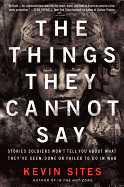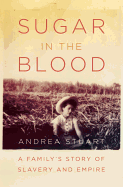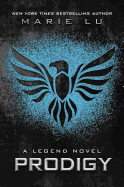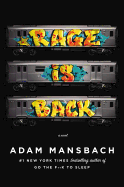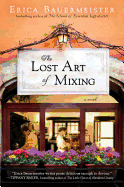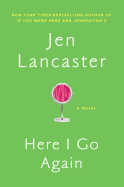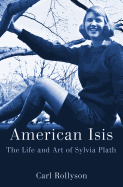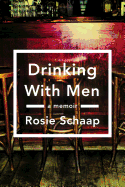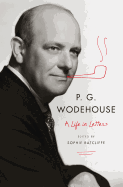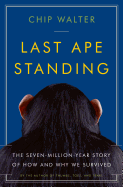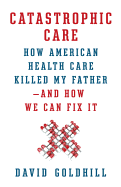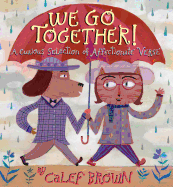Tuesday, January 29, 2013
You know those "Now a Major Motion Picture" medallions publishers stick on every book adapted as a film? They bug me because some of my favorite literary adaptations have been lower-budget indies destined for limited release. "Now a Minor Motion Picture" needs its own sticker.
Okay, maybe not. But this is the time of year--call it Movie Spring--when I watch for signs of promise on the adaptation horizon, starting with the Sundance Film Festival. This hobby provides some respite from the prize-giving obsession (Golden Globes, Oscars, etc.) over last year's releases and is a great way to discover some new reads. Among the notable Sundance offerings last week were film versions of Doris Lessing's The Grandmothers (Two Mothers is the movie's title), Shannon Hale's Austenland, Tim Tharp's The Spectacular Now and the adaptation of an untranslated novel by Roberto Bolaño: Il Futuro (The Future). The Beat Generation continued its big screen revival--launched recently by On the Road--with Big Sur and Kill Your Darlings.
Among the notable Sundance offerings last week were film versions of Doris Lessing's The Grandmothers (Two Mothers is the movie's title), Shannon Hale's Austenland, Tim Tharp's The Spectacular Now and the adaptation of an untranslated novel by Roberto Bolaño: Il Futuro (The Future). The Beat Generation continued its big screen revival--launched recently by On the Road--with Big Sur and Kill Your Darlings.
One of the more publicized Sundance entries was C.O.G., based on a story from Naked by David Sedaris, who called the film "haunting... and it's painful to be reminded of how pretentious and horrible I was."
Beyond Sundance, other literary adaptations attracting some early attention are David Wong's John Dies at the End and a pair of James Franco-directed efforts: Cormac McCarthy's Child of God and William Faulkner's As I Lay Dying.
My own developing must-see list includes upcoming film versions of Nick Hornby's A Long Way Down, Patricia Highsmith's The Two Faces of January and Ron Rash's fine novel Serena.
Major? Minor? Who cares? William Safire once called Elmore Leonard's Be Cool a "bestseller and now a minor motion picture." Doesn't sound so bad, does it? I just want to see the book sticker. --Robert Gray, contributing editor, Shelf Awareness
Rage Is Back
by Adam Mansbach
Adam Mansbach was writing novels long before he came up with the verses to the mega-popular Go the F**k to Sleep. With Rage Is Back, he puts an aggressively intelligent teenage narrator at the center of a story that combines nostalgia for the golden age of New York subway graffiti with a bristling portrait of the city's current class tensions.
Dondi Vance has just been kicked out of prep school for selling weed to his classmates, and his mother's kicked him out of their apartment, so he's couch-surfing with a former associate of his father, the legendary graffiti artist Billy "Rage" Vance. Billy fled the city when Dondi was an infant, after a traumatic run-in with a transit police officer in the subway tunnels. Now, after years of studying with shamans in South America, Rage suddenly turns up--and Dondi is drawn into the plan to take down that cop, who's risen in power to become a mayoral candidate.
The story has several odd twists, like a 14-story staircase in a Brooklyn apartment building that enables you to walk into the future. If that sort of thing bothers you, Dondi advises, "then you should cut your losses and go read Tuesdays with Morrie, before I get to the really wild [stuff]." Some of this weirdness is crucial to the plot, while some of it turns out to be mostly atmospheric. The core drama, after all, is about Dondi making peace with his past. On that front, Mansbach totally reels us in. --Ron Hogan, founder of Beatrice.com
Discover: You might think you're getting a literary version of Turk 182, but then Adam Mansbach's story takes a few Lethem-esque detours into the surreal.
The Lost Art of Mixing
by Erica Bauermeister
In her debut novel, The School of Essential Ingredients, Erica Bauermeister introduced readers to chef Lillian and the students whose lives intertwine at her restaurant's cooking class. Bauermeister returns to Lillian and her kitchen in The Lost Art of Mixing, introducing a new cast of characters who need the healing only good food and friendship can bring.
Sous chef Chloe and dishwasher Finnegan are both recovering from heartbreak, drawn to one another but holding back, skittish and afraid. Isabelle and her adult children are struggling with the implications of Isabelle's memory loss. Accountant Al takes refuge in numbers as his marriage falls apart, while Lillian herself faces a new challenge she didn't expect.
Bauermeister explores each character's life in turn, slowly revealing the experiences that have shaped them, the deep wounds that have left them hungry. She weaves food into each character's story, linking it inextricably with memories--sweet, painful, often both. As the characters' relationships deepen, Bauermeister shows some incidents from several points of view, deftly twining the disparate threads of their lives together. Each chapter holds surprises, as Lillian and her friends come to view themselves and their loved ones in new ways. The ending is more a pause than a final resolution, as the characters all begin to create something new from the changing ingredients of their lives.
As any cook knows, mixing up a new recipe can be challenging, even difficult, but Bauermeister serves up a delicious, captivating story to nourish both longtime fans and new readers. --Katie Noah Gibson, blogger at Cakes, Tea and Dreams
Discover: A captivating novel about a chef and her friends, who begin creating new things from the changing ingredients of their lives.
Here I Go Again
by Jen Lancaster
Jen Lancaster opens her second novel, Here I Go Again, with a description of a character found in every high school: the girl with the most beauty, most money and most spite in her class. In this case, the mean girl is Lissy Ryder--but her glory days are long past, and Lissy finds herself overweight, at odds with the former high school sweetheart who's about to become her ex-husband, out of a job and moving back in with her parents, where she finds herself at the mercy of her mother's two favorite hobbies, cooking fattening foods and belittling Lissy's father. How did her late 30s go so terribly wrong when her teen years were so amazing?
When she attends her class reunion, Lissy learns the truth: those high school years weren't amazing for the classmates whose lives she ruined with her bullying. Lissy's not thrilled to learn her entire class despised her, but what can she do? Go back in time and change history?
The answer is yes. With a little help from a magic potion, Lissy's suddenly back in her high school body and high school life, with a chance to get it right this time--but if she fixes her past, what will happen to everyone else's futures? Fans of Peggy Sue Got Married will adore this lighthearted journey as Lissy goes from vapid brat to mature woman, learning along the way that karma doesn't let anyone off the hook. --Jaclyn Fulwood, youth services manager, Latah County Library District and blogger at Infinite Reads
Discover: A time-traveling romp in which a former mean girl gets her comeuppance and a chance to mend her ways.
Biography & Memoir
American Isis: The Life and Art of Sylvia Plath
by Carl Rollyson
There have been other biographies of poet Sylvia Plath, who killed herself at the age of 30, but Carl Rollyson says those books focused too much on her psychological problems. By contrast, in American Isis, he compares Plath with the Egyptian goddess worshipped as the ideal mother or wife, calling her a "domestic goddess."
A precocious child, Plath was raised by her mother after her father's death and excelled at Smith College. One summer she interned at Mademoiselle in New York City; it inspired her novel, The Bell Jar. In 1953, she made her first suicide attempt. After graduation, she went to England on a scholarship, where she met and married the poet Ted Hughes, after knowing him for only a few months. Rollyson argues that Hughes never really understood Sylvia.
They moved to Boston, where she met the poet Anne Sexton. They would remain friends, helping each other out with their bouts of depression. The couple returned to England and she published her first collection, The Colossus, in 1961. A little over a year later, she learned of her husband's infidelity, moved out with the children, and a few months later put her head in an oven. Sexton callously called it a "good career move." Sadly, she may have been right--Plath's reputation has grown ever since.
Despite some lapses into purple prose and a predilection to compare Plath with Monroe (the subject of one of his previous biographies), Rollyson does a fine job of capturing the tortured life of this young, frustrated Isis who felt she could never do enough. --Tom Lavoie, former publisher
Discover: A highly readable, well-researched biography of a great American poet who died by her own hand way too soon.
Drinking with Men: A Memoir
by Rosie Schaap
Rosie Schaap, who writes the "Drink" column for the New York Times Magazine, started her drinking career at the age of 15 in the bar car of the Metro North train between Westport, Conn., and New York City, trading Tarot readings for surreptitious beers.
While her background remains opaque, it is clear that she had an absent father and a complicated relationship with her mother. These facts combined to make her drop out of high school and hit the road with the Grateful Dead. Although she eventually earned a GED and graduated from Bennington, her education began in earnest in that year with the Dead. Schaap floated on a sea of music, booze, drugs and sex to the West Coast.
Her tale of drinking with men skips around, focusing mainly on bars she has loved and made her own. For a study summer abroad, she was in Dublin, favoring Grogan's Castle Lounge, the first place she found that feeling of community and belonging that she was searching for. Many writers have talked about that "third place," one that isn't home and isn't work where a person feels welcomed and looked after. She writes: "You can drink anywhere. You can drink at home. A bar gives you more than drink alone. It gives you the presence of others; it gives you relief from isolation. When you are a regular, it gives you community, too."
Rosie Schaap is an unapologetic drinker in bars. In her experience, all are richer for it. --Valerie Ryan, Cannon Beach Book Company, Ore.
Discover: Rosie Schaap chronicles her history of drinking in bars--about 13,000 hours, by her estimate--in an entertaining and insightful way.
P.G. Wodehouse: A Life in Letters
by Sophie Ratcliffe, editor
If you haven't read Robert McCrum's masterful 2004 biography of the British comic novelist P.G. Wodehouse, Sophie Ratcliffe's selection from his correspondence will serve quite well until you can get your hands on a copy. While quoting generously from Wodehouse's letters, Ratcliffe also provides interstitial chapters that flesh out his life story. Though he's best remembered for his comedy--even people who've never read a word of Wodehouse recognize "Jeeves" as shorthand for a clever butler--in his own lifetime, the author faced severe disapproval when, trapped in France by the invading Nazis, he recorded a series of radio monologues in 1941 making light of his imprisonment behind enemy lines. ("I can now, of course, see that this was an insane thing to do," he assured the British Foreign Office a year later, "and I regret it sincerely.")
Thankfully, Ratcliffe has no shortage of much happier correspondence on which to draw. Wodehouse always had a keen mind for the business of writing, and knew exactly what he was up to artistically: "Of course my stuff has been out of date since 1914," he jokes to a friend. When he was starting out, he explains, "the only English characters the American public would read about were exaggerated dudes. It's as simple as that."
P.G. Wodehouse: A Life in Letters is a sure treat for anyone who's laughed their way through Uncle Fred in the Springtime or Joy in the Morning and wanted to know more about the man behind them. The rest of you are strongly encouraged to join us. --Ron Hogan, founder of Beatrice.com
Discover: From fan letters to Agatha Christie to intimate correspondence with his beloved stepdaughter "Snorky," a personal portrait of one of the 20th century's funniest authors.
History
Sugar in the Blood: A Family's Story of Slavery and Empire
by Andrea Stuart
In Sugar in the Blood, an absorbing, evocative history of slavery in Barbados, Andrea Stuart passionately and cogently argues that sugar--"more than any other commodity in human history"--has "shaped our tastes, transformed our landscape and influenced our politics." For Stuart, the story of sugar is complex, painful and profoundly personal: like many others with Caribbean roots, she is descended from a wealthy sugar plantation owner and a female slave.
Stuart's convincing speculations, made credible by impeccable research, begin by following her first identifiable ancestor, George Ashby, on the harrowing voyage to Barbados from England in the 1630s. Once there, he tamed a small patch of wild jungle; his great-great-great grandson, Robert Cooper, married well and became a powerful and moneyed plantation owner. It is from Cooper and one of his slaves that Stuart is descended.
Stuart uses her ancestors to tell the story of Barbados's unfolding from untamed wilderness to cultivated colony to floundering society devastated by violent rebellion and the fatal pitfalls of empire. Her history of the island's slaves is, necessarily, upsetting but vital--from the atrocities of the Middle Passage to appalling labor conditions and the ubiquitous rape and exploitation of female slaves.
Stuart has a historian's respect for truth, an economist's skill for incisive analyses and a novelist's flair for color and detail. Having published two biographies prior to this book, she has expertly applied her skill and sensitivity to this "biography" of Barbados. Her deeply personal connection to the subject--the "sugar in her blood"--makes this history all the more urgent and engrossing. --Hannah Calkins, blogger at Unpunished Vice
Discover: An Afro-Caribbean writer applies her biographer's skills to her family tree, in which the history of sugar, slavery and empire are carved.
Current Events & Issues
The Things They Cannot Say
by Kevin Sites
The prevalence of suicide and post-traumatic stress disorder among Iraq and Afghanistan war veterans is alarming for the United States and devastating for the vets and their families. Kevin Sites, a 10-year veteran of combat journalism, sought out a dozen such vets to tell their stories. In his introduction to The Things They Cannot Say, Sites confesses that he collected these soldiers' thoughts both to understand their plight and as an attempt to deal with his own PTSD: the atrocities he witnessed as an embedded journalist affected him as severely as they did the soldiers around him. "In war," he learned, "there are no sidelines on which to sit."
A soldier's return from war to civilian life has always been a difficult process. The soldiers in Sites's interviews come from a variety of backgrounds, but they all return from the front with troubling memories and are dissociated from their families. Often, they succumb to prescribed drugs supplemented by street drugs and alcohol. Many eventually overcome this doomed cycle, but many don't. Sites finds that the consistent factor among those who do recover is learning to talk about their war experiences. One of his many sources, psychiatrist Jonathan Shay, best summarizes Sites's message: "When you put a gun in some kid's hands and send him off to war," Shay says, "you incur an infinite debt to him for what he has done to his soul." --Bruce Jacobs, founding partner, Watermark Books & Cafe, Wichita, Kan.
Discover: A gritty look at postwar distress, including veterans' personal accounts, by a journalist with his own intimate perspective on the subject.
Science
Last Ape Standing: The Seven-Million-Year Story of How and Why We Survived
by Chip Walter and Lawrence C. Mayer
"Lions and tigers, panthers and mountain lions, coexist," Chip Walter writes. "Gorillas, orangutans, bonobos, and chimpanzees do as well (if barely). Two kinds of elephants and multiple versions of dolphins, finches, sharks, bears, and beetles inhabit the planet. Yet only one kind of human. Why?"
Paleoanthropologists have uncovered evidence of at least 27 different species of humans in Earth's history, some of whom lived hundreds of thousands of years on the planet. Evidence suggests some of these species crossed paths and even procreated together. In Last Ape Standing, Walker (Thumbs, Toes, and Tears) investigates why Homo sapiens sapiens are the only remaining humans and how they came to be the creatures they are.
Historical remnants of early human species are rare, but as science advances, paleoanthropologists are able to debunk previous myths about their evolution. When fossils aren't readily available, scientists use other means to explore the past, like lice. Walter explains it all in layman's terms. He makes use of metaphor to help his readers understand the complex science behind the brain and other biological elements. Keeping track of the various human species' names can sometimes feel like a juggling act, but it isn't vital to understanding the overall concepts of man's evolution.
Whether reading as a student or simply someone interested in how we came to be who we are today, Last Ape Standing provides a captivating look at science's evidence of evolution. --Jen Forbus of Jen's Book Thoughts
Discover: The evolutionary path humans have traveled over millennia to become Homo sapiens sapiens is full of surprises.
Health & Medicine
Catastrophic Care: How American Health Care Killed My Father--and How We Can Fix It
by David Goldhill
David Goldhill's 2009 Atlantic cover story "How American Health Care Killed My Father" was motivated in part by his grief after his father's death following a series of infections acquired during an extended hospital stay. Catastrophic Care continues his passionate inquiry into the intricacies of the country's health care system, the financial realities of available insurance coverage options and the failings of the current medical approach to patient care. Luckily, despite the numbers and the statistics, Goldhill's book is highly readable, and his arguments for change, influenced by his business background, are compelling.
Goldhill's ideas for a new health-care system include mandatory low-premium, high-deductible catastrophic coverage for all, expanded health-care savings accounts for coverage of preventive and non-catastrophic patient needs and the availability of health-care loans for medical issues that are costly but not catastrophic. His vision would thus require less dependence on big insurance companies and Medicare/Medicaid, more patient involvement in decisions about their health care and increased transparency within the entire system. While all of these proposals sound intriguing, critics may question whether or not patients will be able competently to manage their health when independently choosing providers, diagnostic tests or treatments modalities. Even if readers might not agree with all of Goldhill's findings or proposals, he's clearly done his homework, and Catastrophic Care will spark a conversation, if not a movement. --Roni K. Devlin, owner, Literary Life Bookstore
Discover: An impressive investigation into the failings of the American health care system with a clear proposal of how it might be fixed.
Children's & Young Adult
Prodigy
by Marie Lu
This stunning follow-up to Legend finds the fugitive star-crossed lovers more often apart than together, in order to carry out an assassination plot.
It's been nine days since the final events of Legend, in which June, the Republic's most celebrated prodigy, rescued Day, the Republic's most wanted criminal, from a death sentence. The story opens in Las Vegas, where June and Day seek aid from the rebel Patriots. Day, nightmare-stricken after the recent murders of his mother and brother, hunts for his plague-infected brother, Eden, and orphaned companion, Tess. Meanwhile, June tenuously forms an alliance with the Patriots despite years of being trained to hate them.
All the rules change when the Republic's Elector Primo dies, leaving his son, Anden, in charge. The Patriots' leader, Razor, offers Day surgery for his wounded leg, assistance with tracking down his brother and escape into the Colonies where freedom and opportunities await--in exchange for swearing allegiance to the Patriots. June and Day's assignment: to assassinate the new Elector Primo.
Marie Lu delves into the gray area surrounding this revolution with smoothly integrated social commentary, through chapters that once again alternate between Day and June. June sees glimmers of leadership qualities in Anden that his father didn't have. Could their mission be misguided? The thrilling action and futuristic settings are sure to please fans of Divergent. The ending sets the stage for the trilogy's finale, when everyone will be tested for the country they hope to establish. --Adam Silvera, reviewer and former bookseller
Discover: The two opposing prodigies from Legend join forces to launch a revolution that promises to unite everyone.
We Go Together!: A Curious Selection of Affectionate Verse
by Calef Brown
Just in time for Valentine's Day, Calef Brown presents 18 clever odes to twosomes both romantic and platonic.
Each poem in this hand-size volume appears opposite a full-page, full-color illustration, making this highly suitable for gift giving. Many of Brown's choices offer pleasing surprises. Rather than a bicycle built for two, he pictures a crocodile pedaling his date on the handlebars of a bicycle built for one. The contents of the picnic basket, which the scaly gent balances on his lap, appears on the opposite page, beneath the poem. "We Go Together" honors two guys walking in step down a sidewalk ("Genuine chums./ Loyal amigos/ with infinite sums/ of friendship, affection/ and pure camaraderie./ We won the buddy lottery"), while two girls leap into the air, bumping hips as "Mirth Makers" ("Oh, the mirth we make!/ Every day of life/ is like a birthday cake"). A poem about "FBF" (Forever Best Friends) acknowledges their history together, including their "greenish phase," performing at weddings as "Emerald 'n' Jade."
Children will find humor in Brown's unusual turns of phrase and unlikely comparisons: "You to me/ are like an adorable doorbell," begins a poem about how a beloved's call brings him running; and he uses a kiwi to send up the classic form of a love poem: "I am, quite frequently,/ reminded by thee/ of a kiwi./ Either kind. You have thin skin,/ or rather, rind,/ but mostly I find/ that you're frightfully sweet."
This funny, often touching volume probes the many ways in which two people connect. --Jennifer M. Brown, children's editor, Shelf Awareness
Discover: A funny, often touching collection celebrating all kinds of love.


